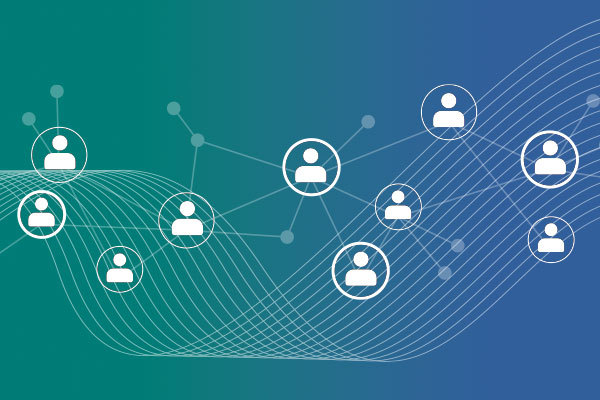Price Optimization: A Guide to Maximizing Profit
By Zilliant
Feb 15, 2024
Table of Contents
- What is Price Optimization?
- What is the Role of Price Optimization in B2B?
- Why is Price Optimization Important?
- How do you Calculate an Optimal Price Point?
- How do you Measure Price Elasticity in B2B?
- How Does Optimization Correct for Previous Pricing Mistakes or Irrational Pricing?
- How Do You Use Price Optimization?
- Where Do Optimized Prices Go?
- What is an Example of Dynamic Pricing Using Price Optimization in B2B?
- FAQ
Learn what price optimization is, how price elasticity is calculated, how dynamic pricing works, and why price optimization is critical for maximizing profit.
What is Price Optimization?
Pricing optimization utilizes artificial intelligence and machine learning to measure price elasticity and predict the outcomes of various pricing strategies. It then generates pricing that wins the business without sacrificing the necessary margin.
Modern business moves at lightning speed through many sales channels. The corresponding data grows at an exponential pace and creates increasing complexity as new market triggers force companies to adjust pricing. These dynamic factors include order history, customer behavior, competitive concerns, available inventory, demand swings and market specifics, and more. Each factor uniquely influences price from one selling scenario to the next.
Attempting to manage pricing complexity manually with spreadsheets or homegrown tools exposes companies to serious margin leakage.
Analysts commonly use spreadsheets and other manual tools to set and manage prices. If your business only has a handful of products and customers, this tends to work well. What about companies with tens of thousands of SKUs and thousands of customers? A massively complex business environment is the new reality for most B2B companies.
Price optimization software can capitalize on this inherent complexity that companies are operating within by using artificial intelligence and machine learning techniques to achieve P&L objectives. Price optimization has been developed for both B2B and B2C use cases. IDC draws a distinction between the two groups as follows:
B2B price optimization applications, which typically focus on pricing products that are sold by a salesperson, are increasingly being sold via B2B eCommerce and direct to consumers via B2C and B2B2C. Retail B2C price optimization applications are customized for pricing retail merchandise across channels and life-cycle pricing capabilities to price merchandise as it moves through the various stages of retail life. These stages include regular, introduction, promotion, markdown, and clearance pricing.
As the leader in B2B price optimization software, we will focus on the former in this explainer.
What is the Role of Price Optimization in B2B?
Price optimization allows B2B companies to set prices that make sense for each unique selling circumstance. This is a significant challenge without leveraging a practical approach to data science.
The many ways a company prices — list, matrices or tiers, customer agreements, spot negotiations and overrides, all of which are interconnected — drive complexity. Distributed pricing decisions, large customer and product counts, and complex product configurations further complicate the pricing process.
It can become unmanageable to account for all of the factors that influence price. These factors include cost changes, competitive dynamics, product velocity, customer relationships and types, geographies, and order circumstances.
It’s no wonder the go-to method of spreadsheets or generic manual tools no longer works for setting pricing that’s critical to meeting financial targets. A more sophisticated approach is necessary.
Read More: How Price Optimization Helps B2B Sales
Why is Price Optimization Important?
Price optimization simultaneously accounts for all the factors that drive price, rationally aligns price/customer/order/product relationships simultaneously, and measures what drives price response in the market. It also simultaneously enforces necessary guardrails and produces price guidance for all the different ways price is expressed in a B2B business.
Read More: Pricing Data Science Blog - FAQs with Lee Rehwinkel
How do you Calculate an Optimal Price Point?
Price optimization explores all the factors that influence price to create a statistically and strategically relevant price segmentation structure. The resulting micro-segments are typically a function of product, order and customer attributes.
The most effective segmentation structures balance model sophistication with explanatory power. In other words, if you can get to 90 percent explanatory power with eight attributes, but to get to 92 percent explanatory power you would need to five additional attributes, it may not be worth the trouble or added complexity. 90 percent will suffice.
Segmentation attributes, such as customer size, geography, order size, product velocity, product category, etc., are typically arranged in a tree structure. As is common in B2B, there will likely be some nodes in the tree with little to no transaction data available.
Advanced statistical techniques can be used to ensure your optimization model can derive clues from nearby nodes in the tree and come to a determination on the market price. Importantly, the underlying data science is exposed to the user, empowering them to explore different variations of the segmentation model, add new attributes, or create an entirely new structure as needed.
Once similar transactions are grouped in the proper segments, price optimization solutions can pinpoint the market price for each segment and begin to use that as the foundation for how to set prices going forward, including factoring in a key, and often overlooked step: measuring price elasticity to understand how a change in price will impact a change in win rate or volume, segment by segment.
Watch: The Unique Pricing Data Science Behind Zilliant Price IQ
How do you Measure Price Elasticity in B2B?
The purpose of optimization is to find the set of inputs that lead to the maximum output. In other words, find the prices that result in the desired revenue or margin outcomes for each part of your business. The goal is not just to have different prices, it’s to hit certain revenue and margin targets, using price.
Understanding how different customers will react to price changes – and predicting the revenue and margin outcome - across various circumstances requires price elasticity. Price elasticity is the single most-important factor in setting profitable prices while keeping revenue risk to a minimum. Without price elasticity for a given customer segment, you risk leaving money on the table or losing profitable sales.
Most B2B companies do not use price elasticity to set prices because they assume they can’t. Instead, these companies rely on backward-looking analytics or statistical distributions of prices. It’s been a long-held belief that price elasticity is impossible to calculate in a B2B selling environment. That’s simply not true.
It is possible to measure how market segments respond to price changes and thus optimize outcomes. The data needed to take a scientific approach to price optimization already exists. It’s readily available transaction data — the customer, product, and order data that every company captures in the course of doing business.
From that data, you can segment customers into small groups that have similar price responses. Then, measure the price elasticity on an ongoing basis for each segment. Take a surgical approach to pricing and measure price elasticity and set goal-seeking pricing strategies to maximize revenue or profit. This can have a dramatic impact on profits while minimizing risk and improving responsiveness to market dynamics. This approach is what differentiates price optimization.
Read More: Price Elasticity in B2B: The Real Meaning of Price Optimization
How Does Optimization Correct for Previous Pricing Mistakes or Irrational Pricing?
When pricing decisions are largely decentralized, it’s not uncommon for historical prices to be out of alignment with respect to rational price relationship expectations. For example, small customers get better pricing than large customers, all else being equal, or premium products sell for less than mid-tier products, all else being equal. Pricing along customer relationships, order size and product value dimensions can quickly become irrational, putting sales rep confidence in prices and customer satisfaction in jeopardy.
Constraint-based price optimization solves this challenge. If a pricing model built with constraint-based optimization could speak, it would say, “Tell me all the relationships that I need to respect and I will simultaneously compute all those prices rather than writing a thousand if/then statements.”
By simultaneously accounting for business rules and price relationship requirements through constraint-based price optimization, you avoid the hazards of conflicting rules.
Watch: Pro A Pro Grows Wallet Share With Actionable Customer Insights
How Do You Use Price Optimization?
A true price optimization model is not a black box, but rather a crystal box. Once a pricing model is built, a pricing analyst or category manager needs a mechanism to interact with it.
Optimization is a goal-seeking activity. A pricing analyst can set specific revenue and profit goals for different pricing segments at varying levels. Those goals can then be subjected to a set of business constraints. Finally, the pricing analyst can view the predicted revenue, margin, and volume impacts of those price changes before putting prices into market.
Read More: Four Strategies to Combat Inflationary Pricing Pressures and How to Counteract Inflationary Pressure
For example, I’d like to maximize profitability on product category A in the Southwest region for small customers, but don’t raise my prices by more than five percent. In a different segment, large customers in the Northeast on product category B, I’d like to take more share and be revenue aggressive, but keep a minimum margin of 30 percent and don’t lower prices by more than seven percent. And, for all other segments in my business, take a more balanced approach to revenue and profitability.
Once the optimizer runs the various pricing strategies, the pricing analyst can drill into the recommended price changes across products and customers and view the predicted impact to ensure the strategies will produce the desired P&L results. The “what-if” scenario capability coupled with the predictive nature of price elasticity, is key to using price as a strategic lever to improve profitability.
Watch: Essential Price Optimization Advice
Read More: A European MRO distributor drives major improvement with price optimization software
Where Do Optimized Prices Go?
The difference between winning and losing an important deal comes down to how quickly the right price is given to sales and customers. Price guidance from a true cloud-native price optimization solution is seamlessly delivered into any ERP, CRM, CPQ or eCommerce application in real-time and dynamically adjusted as deal conditions change. Whenever, wherever — that’s the power of price optimization and it’s table-stakes for a modern B2B business.
Read More: What is Deal Management?
What is an Example of Dynamic Pricing Using Price Optimization in B2B?
Read More: How a Real-Time Pricing Engine Soothes Dynamic Pricing Pains
The building products manufacturing industry is extremely competitive, fragmented and complex. As countless suppliers battle over the same pool of projects, prices tend to follow a downward trajectory. Sales reps either lose the bid or drop the price to a point that decimates profit margin. This is a big problem as material costs fluctuate.
Some discrete products manufacturers sell standard products through distributors as well as a direct sales team. It’s important for these manufacturers to find the right mix of system or matrix and customer-specific pricing while minimizing deviations.
Each of these industry undercurrents ring true for TERREAL, a €376 million French manufacturer of clay building materials, which employs nearly 2,500 people around the globe. Known for its specialty in terra cotta, TERREAL provides solutions for roofing, structure and façade/decoration.
More than 150,000 homes are built or renovated with TERREAL tiles each year, and another 20,000 are built with TERREAL bricks. The company’s rapid growth and expanded global footprint introduced more layers of go-to-market complexity. Their customers could buy from regional depots, distributors, eCommerce sites and retail stores. Aligning prices across sales channels and enforcing rational price guidance among sales reps became a heavy burden.
TERREAL revamped its pricing strategy with price optimization to price strategically. Prices that had decreased over time below the floor price have been moved back up to a fair and profitable level. Using price elasticity as a guide, TERREAL has been able to run campaigns that surgically change prices in the business.
This helped the company achieve varying P&L objectives. TERREAL is now getting fair value for its products, without losing volume or facing customer pushback.
Terreal has been above market performance in terms of volume and price!
Watch Video: TERREAL Leverages Price IQ to Perform Above the Market in Volume and Price
To learn more about Zilliant’s pricing software solutions, schedule time to speak with one of our experts.
FAQ
What is Price Elasticity?
Price elasticity predicts how a change in price will impact volume by measuring what drives price response in the market. In practical B2B applications, it’s one step in the price optimization process. This allows business users to conduct what-if scenarios on various objectives and understand margin and volume impacts before publishing new prices.
Learn More: What Works When Traditional Price Elasticity Fails
What is Price Segmentation?
Price segmentation uncovers the variables that explain historical pricing behaviors exhibited in a company’s order or quote history. There are many critical factors that drive each unique price point. These factors include market conditions, product value, product hierarchy, customer spend, order size, discounts, regional dynamics, competitive factors, cost factors, margin targets, company growth goals and more.
Learn More: Transforming Your B2B Pricing Strategy and Processes
What is Dynamic Pricing?
Dynamic pricing means that your customers see prices that are relevant to market and channel conditions.
Learn More: What is Dynamic Pricing?
What is Pricing Software?
Pricing software helps industries ranging from retail to B2B to financial services and communications companies analyze, manage, optimize and execute prices.
Learn More: What is Pricing Software?
What is a Real-Time Pricing Engine?
A real-time pricing engine executes real-time price calculations (or real-time price builds) in response to calls from any commercial system. It incorporates an unlimited number of disparate data sets into the pricing engine. Then it performs complex calculations on demand and enables real-time price delivery back into commercial systems.



